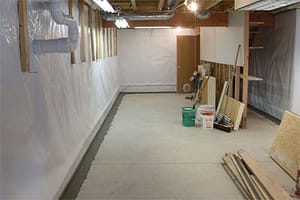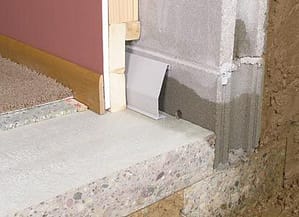The Main Principles Of Best Basement Waterproofing
The Main Principles Of Best Basement Waterproofing
Blog Article
The Best Guide To Best Basement Waterproofing
Table of ContentsWhat Does Best Basement Waterproofing Do?Some Known Questions About Best Basement Waterproofing.The 6-Minute Rule for Best Basement WaterproofingThe Best Basement Waterproofing IdeasThe Facts About Best Basement Waterproofing Revealed
AdvantaClean's trained experts and professionals will situate the water source. If wall or piece fractures are existing, we will certainly infuse polyurethane and epoxies into the cracks and seal the compromise, preventing more moisture from going into.
If there's condensation on the outside of the foil, you have high moisture in your basement. If the aluminum foil has condensation on the inside surface area (next to the wall surface), the soil around your home may be normally damp from a high water table or bad dirt drain.
You can waterproof just your interior walls, which may solve the issue. Once they dry, they stick completely to concrete and stonework walls.
The Best Strategy To Use For Best Basement Waterproofing
Swirl the brush at the last of application to provide the wall surface an appealing, ended up appearance. Concrete water-proof finishings can not be related to formerly painted surface areas; examine the tag. A 5-gallon pail prices about $60. Known as densifiers, they are suitable only for walls that have not been repainted or sealed.
Yet you clean, roll, or spray it on far more heavily one gallon covers simply 75 square feet, not the 300 square feet normal with standard paint. Waterproof paint is great for do it yourself application. You can use it over repainted surface areas, and paint over it once it's treated (one gallon expenses $37).
It can set you back $10,000 to $15,000, depending on the job needed. Outside waterproofing involves digging deep into all around the house to the complete depth of the structure wall surfaces, then installing a water-proof finishing or membrane topped by water drainage panels.
A basement without waterproofing is kind of like that. Your cellar does not want to go with a rainstorm without appropriate protection simply as much as you don't want to.
Best Basement Waterproofing Can Be Fun For Anyone
But if you've done your research, you 'd recognize there original site are two types of waterproofing: inside and exterior. It can get perplexing what they both mean, which one's a far better financial investment, and what will in fact maintain the water out. Do not worry, we created this blog to quickly specify both techniques for you and review the pros and cons of each.
Outside waterproofing is a waterproofing technique that involves securing your home from the outside. It's kind of like a moat around a castle. It includes digging a trench around your whole residence to the foundation (about 8 to 10 feet down). The structure wall surfaces are then cleaned, secured, and covered with a waterproof membrane layer or sealer.

Getting My Best Basement Waterproofing To Work
It's a much more engaged process that calls for digging up your backyard, which is pricey and lengthy. Outside waterproofing entails removing whatever bordering your home, including patios, driveways, pathways, landscape design, AC systems, decks, and more. If any one of the job was done inaccurately and water is still entering your basement, there isn't much you can do to fix or repair it.
Interior basement waterproofing entails waterproofing from the inside. Any kind of water that leaks right into your link basement is rerouted before it touches your flooring. It's sort of like wearing a raincoat under your garments. It entails 2 points: a water drain track and a sump pump. It functions by securing the within of your cellar wall surfaces and floorings so water that attempts to go into is carried out with a sump pump.
It's an efficient approach to waterproof your basement - Best Basement Waterproofing. The drawback of indoor cellar waterproofing primarily involves the installation process. This approach calls for stored items, furnishings, and integrated shelving or closets to be moved Website from touching the basement wall surfaces. And during installment, your basement can't be made use of. The most significant difference between both approaches is this: Outside waterproofing is a preventative remedy and indoor waterproofing is a corrective option.
Best Basement Waterproofing Fundamentals Explained
Finally, exterior and indoor basement waterproofing are both effective approaches of shielding your home from water damages. Exterior waterproofing creates an obstacle that stops water from entering your home, while interior waterproofing reroutes water that does enter your home. And it is necessary to note that outside waterproofing is a costly and disruptive installment process when contrasted to interior waterproofing.
Whichever method you select, make certain you choose a dependable and reliable professional for the work. If you have any type of inquiries about cellar waterproofing, please get to out to us.
You can complete our kind here, start a conversation in the bottom right-hand corner, or call us at 1-800-827-0702.
Report this page